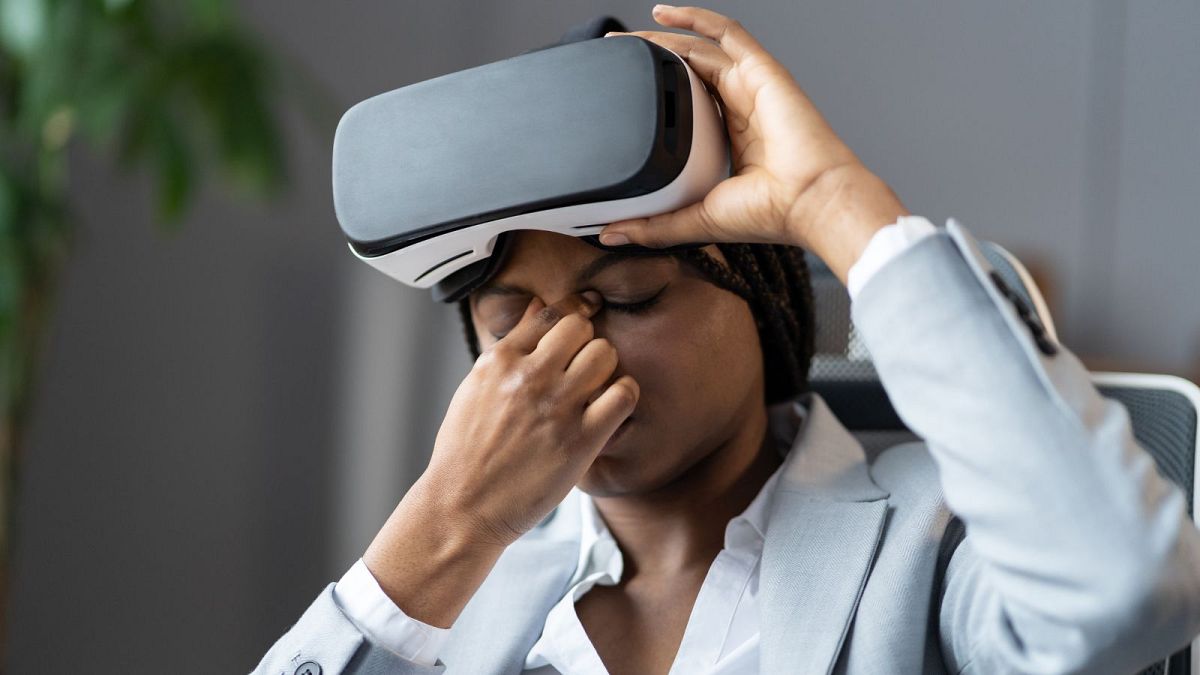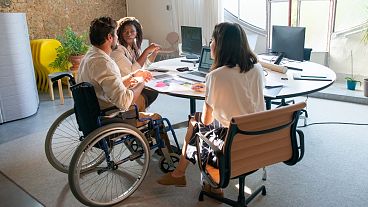From motion sickness to eye strain, electronic devices can have serious effects on our health. How do we prevent them?
Do you use screens and often have red eyes, nausea or a pulsing headache? If that sounds familiar, you might be suffering from something known as “cybersickness”.
As well as these initial signs, there is a broad range of conditions that are believed to be induced by heavy daily screen time. However, nausea or feeling queasy are primary symptoms of cybersickness, a type of motion sickness.
In reality, what you’re experiencing is a conflict between different parts of your body and how they are simultaneously interacting with their surroundings; usually, it’s with the eyes perceiving one thing - the movement on screens, for instance - and the rest of your body taking in another thing, i.e. the stillness of your position.
“The more encompassing term is vision-induced motion sickness (VIMS),” John Golding, a professor of Applied Psychology at the University of Westminster in the UK, told Euronews Next.
Cybersickness happens with most immersive technologies, like virtual reality (VR), but Golding said that reports of people experiencing it can be tracked to the first films screened by the early pioneers of cinema, the Lumière brothers, at the turn of the twentieth century.
In the same way not everyone will be affected by travelling by car, some people are more sensitive than others when it comes to VIMS.
“People who are susceptible to migraines tend to be much more sensitive,” said Golding, as well as people suffering from conditions that affect the vestibular system, a part of the inner ear affecting balance, spatial awareness and eye reflexes.
So, given the pervasive use of screens in most people’s daily lives, how do we avoid or deal with the impact of cybersickness?
Dealing with the symptoms
To mitigate VIMS, one option is to simply stop, Golding says, but if that’s not possible, some techniques proven efficient on classical motion sickness can help.
“You can try controlled breathing techniques. It's free. It doesn't have side effects,” said Golding, adding that studies showed that alone, it was half as effective as standard anti-motion sickness drugs.
Moreover, when it comes to undesirable side-effects of screens, taking breaks and moderation seems to be the key to preserving your health.
“Screen time impacts all aspects of daily life regardless of your age. So physically, your sleeping time is shortened and often of poorer quality,” Dr Sylvie Dieu Osika paediatrician at the Jean Verdier Hospital in Bondy, France, told Euronews Next.
With sleep being impacted, a lot of cognitive functions are therefore impacted.
Moreover, it’s important for children, in particular, who are more vulnerable to symptoms to set a healthy example when it comes to screen time management.
“The parent must be available to the child, so he or she must not be distracted by the screen himself or herself,” Osika said, adding that it was important to set rules early in childhood.
"Children under 6 have everything to learn and no application or audiovisual programme is educational at this age - despite what the tech industry would have us believe."
In the last few years, experts coined the word “technoference” to define how electronic devices are impacting our interpersonal relationships, whether romantically or with friends and family, on a daily basis.
So, how do you know when the technoference is taking up too much space?
“A general principle for assessing excessive screen use is a reduction in activities other than screen time, with a steady increase in screen time,” said Osika.
“When you stop doing sport, music or going out, when you meet up with friends and/or family less and less often [...], you need to be concerned and take action,” she added.
The 20-20-20 rule
When it comes to more benign side effects like eye strain, a condition that can cause symptoms such as blurred vision, headaches, and dry eyes, taking breaks is also beneficial.
For example, the 20-20-20 rule is a simple way to help prevent it.
For every 20 minutes of looking at your screen, take a 20-second break and look at something that is at least 20 feet - or approximately 6 m - away from you.
This will help to relax your eye muscles and reduce eye strain, research by a team at the UK’s Aston University, found in a 2022 study published in collaboration with the University of Valencia in Spain.
The researchers used a special software on the laptops used by 29 participants, which tracked their gaze direction every few seconds using an in-built camera. After 20 minutes, the participant was prompted to rest for 20 seconds.
Measured over the course of two weeks, the team were able to determine that the 20-20-20 method resulted in less dryness of the eye, sensitivity and discomfort.
“It’s easy for others to replicate the effect [of the software used] by setting a timer on their phone, or downloading a reminder app,” James Wolffsohn, a professor of Optometry at Aston University who led the research, said in a statement when the study was published.
“It’s a simple way of reminding yourself to take regular breaks for the good of your eyes”.
Other advice ranges from keeping your computer screen clean, at over 60 cm from your eyes and not too brightly lit to avoid strong contrast with the rest of the room, according to the specialised media Healthline.



